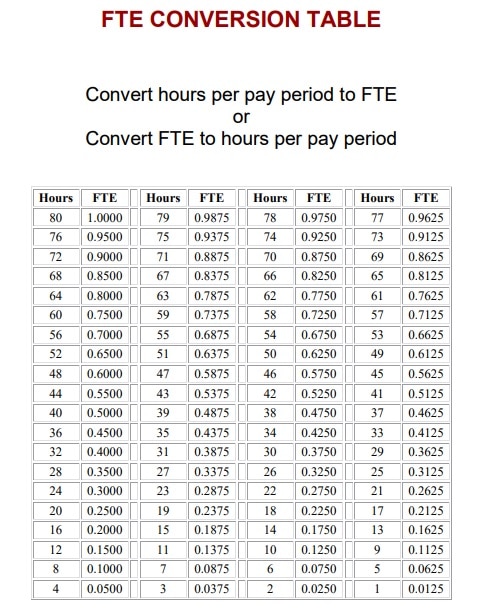
What is Full-Time Equivalent (FTE)?
FTE stands for the full-time equivalent. FTE is an HR Metric to measure the number of total full-time employees along with the number of part-time employees that can be converted into full-time terms.
In simple terms, FTE is a method to calculate the number of total employees working in your organization by converting the strength of part-time employees to full-time employees along with your full-time employees.
FTE Calculations
According to general HR standards, an employee working 30-40 hours or more per week is considered a full-time employee. But a part-time employee is the employee who works less than 130 per month or less 30 hours per week.
But when you have many employees who work for you on a part-time basis along with the full-time employees, then FTE will be used to calculate the total number of employees.
FTE is used even to qualify an employee for its benefits like health insurance, bonus pay, etc depending on the company policies.
How to Calculate Full-Time Equivalent (FTE)?
If you don’t have any part-time workers then the total number of employees is simply the total strength of your organization.
To calculate the FTE count, you need to convert the hours worked by your part-time employees to full-time workers by dividing the total number of hours worked by all part-time employees by 30 and adding it to your full-time employee strength.

Formula:
FTE = Sum of total weekly hours worked by all part-timers + Total Full-Time Employees
30
Let us understand it with some examples.
Examples
Company A has a total strength of 56 employees out of which 46 are full-time employees and 10 are part-time employees.
To calculate the FTE equivalent for Company A by applying the above formula will be as follows:
Let’s say, each part-time employee works 4 hours a day, that is 20 hours per. Thus the sum of weekly hours worked by all part-time employees is 10 X 20 = 200. Now dividing it by 30 you get 6.66. Rounding down will give you 6 employee count.
Thus FTE for company A = 6 + 46 = 52 Full-Time Employees.
If Company A has no part-time workers then their total strength is equal to the FTE count. That is 56.
Here is a conversion table originally published by hr.fsu.edu that might be helpful to you:

You can download other useful HR templates like Revenue Per Employee Calculator, Monthly Attrition Report, Cost Per Hire Calculator, Employee Resignation Schedule and many more from our website.
We thank our readers for liking, sharing and following us on different social media platforms.
If you have any queries or suggestions please share in the comment section below. I will be more than happy to assist you.